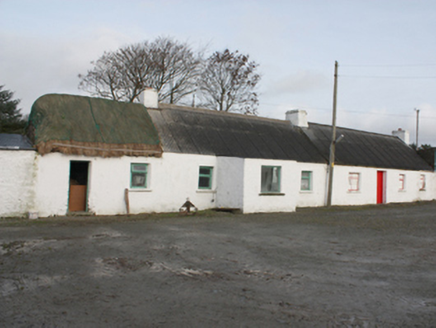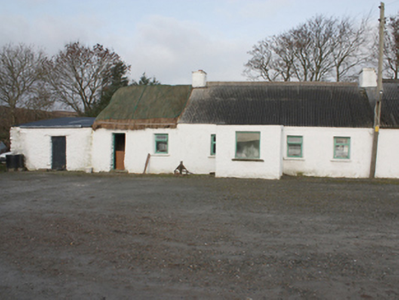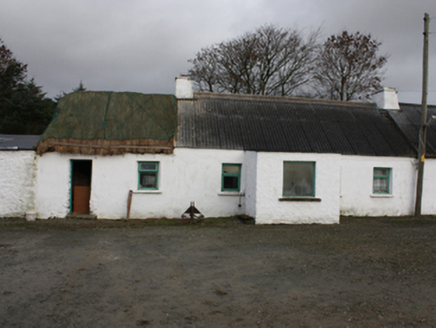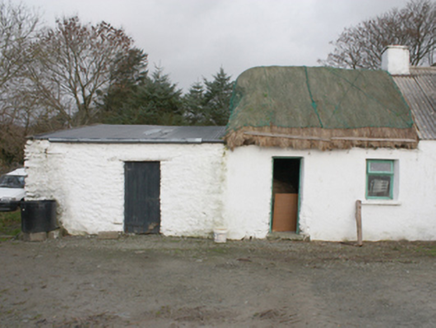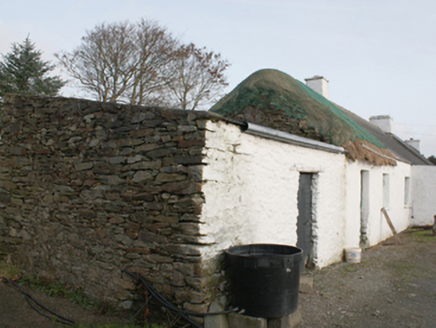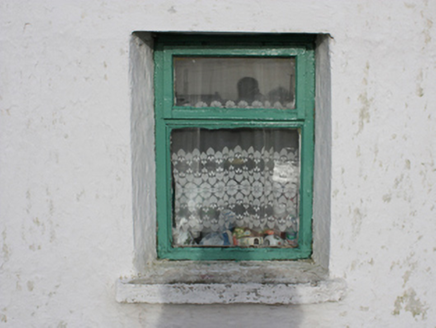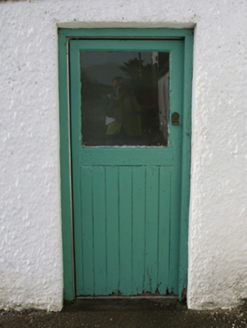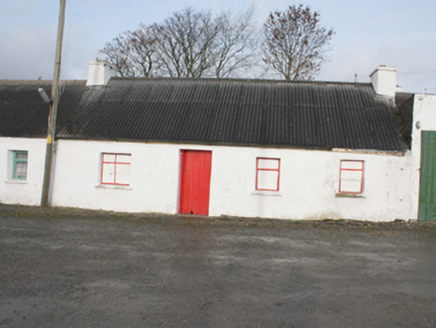Survey Data
Reg No
40902131
Rating
Regional
Categories of Special Interest
Architectural
Original Use
House
Date
1840 - 1880
Coordinates
256762, 437468
Date Recorded
21/11/2008
Date Updated
--/--/--
Description
Attached four-bay single-storey vernacular house, built c. 1860, with entrance porch to front, having extension and outbuilding to west gable and vernacular house attached to east gable. Pitched corrugated asbestos sheet roof with asbestos ridge tiles, smooth rendered gable ended chimneystacks with rendered cornice coping; thatched roof to extension to west. Smooth rendered and whitewashed walls with roughcast rendered walls to porch. Square-headed window openings with timber casement windows and painted sills. Square-headed door opening with glazed timber panelled door. Set within grounds shared with attached four-bay single-storey vernacular house with pitched asbestos sheet roof, smooth rendered gable ended chimneystacks with rendered coping and replacement rainwater goods, smooth rendered and whitewashed walls and square-headed openings.
Appraisal
Although now altered, this relatively intact example of a vernacular house retains its early form and character, and is an appealing feature in the scenic rural landscape to the south-west of Moville. Modest in architectural ambition it exhibits the simple and functional form of vernacular building in Ireland. Of particular interest in the survival of the thatch roof to the extension to the west, which is now sadly becoming increasingly rare in Donegal. The rounded roof is a typical feature of thatched houses located close to the sea in exposed areas in the north-west of Ireland. The corrugated asbestos roofs to the dwelling and its adjoining neighbour to the east indicates that these buildings were probably originally or formerly thatched. The form of this building and location of the chimneystacks suggests the main dwelling is of the ‘direct entry’ type that is characteristic of the vernacular tradition in north-west Ireland. The loss of the original fabric to the openings detracts somewhat from its appeal though suitable replacements could easily be installed. Sensitively restored, this building would make a strongly positive contribution to its pleasant rural location, and would be an integral element of the built heritage of the local area.
